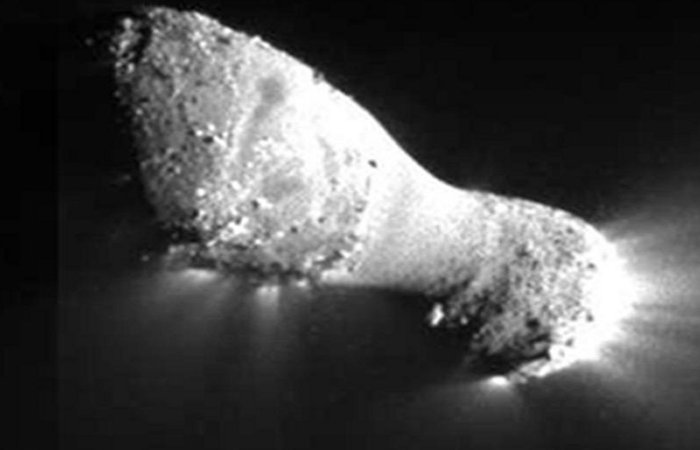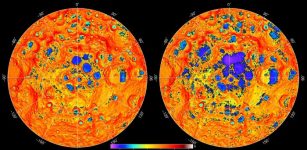Up To 60% Of Near-Earth Objects Could Be Dark Comets
Eddie Gonzales Jr. – MessageToEagle.com – A University of Michigan study suggests up to 60% of near-Earth objects could be dark comets, which may have delivered water to Earth. These mysterious asteroids, orbiting between Jupiter and Mars, likely contain subsurface ice.
Image of Comet Hartley 2. This image was captured by NASA’s EPOXI mission between Nov. 3 and 4, 2010, during the spacecraft’s flyby of comet Hartley 2. It was captured using the spacecraft’s Medium-Resolution Instrument. Image credit: – Public Domain
This finding supports suspicions held since the 1980s, according to lead author Aster Taylor.
The study suggests a possible route for ice delivery in our solar system’s vicinity, addressing the longstanding question of Earth’s water origin.
“We don’t know if these dark comets delivered water to Earth. We can’t say that. But we can say that there is still debate over how exactly the Earth’s water got here,” Taylor said. “The work we’ve done has shown that this is another pathway to get ice from somewhere in the rest of the solar system to the Earth’s environment. Taylor said in a press release.”
Research suggests a large object may originate from Jupiter-family comets, whose orbits approach Jupiter.
Dark comets are mysterious, combining asteroid and comet traits. Asteroids are rocky, ice-free bodies orbiting within the ice line, where solar proximity causes ice sublimation.
This study examined seven dark comets, estimating that 0. 5% to 60% of near-Earth objects could be dark comets without comae but with nongravitational accelerations. Researchers suggest these comets likely originate from the asteroid belt, implying that asteroids there contain ice.
“We think these objects came from the inner and/or outer main asteroid belt, and the implication of that is that this is another mechanism for getting some ice into the inner solar system,” Taylor said.
“There may be more ice in the inner main belt than we thought. There may be more objects like this out there. This could be a significant fraction of the nearest population. We don’t really know, but we have many more questions because of these findings.”
Previously, Taylor’s team identified nongravitational accelerations in near-Earth objects, dubbing them “dark comets.” They attributed these accelerations to sublimating ice.
In this study, Taylor and colleagues investigated the origin of these dark comets.
“Near-Earth objects don’t stay on their current orbits very long because the near-Earth environment is messy,” they said.
“They only stay in the near-Earth environment for around 10 million years. Because the solar system is much older than that, that means near-Earth objects are coming from somewhere—that we’re constantly being fed near-Earth objects from another, much larger source.”
To determine the origin of this dark comet population, Taylor and colleagues modeled the paths of objects with nongravitational accelerations over 100 000 years to determine dark comets’ origin. Their findings suggest that many of these objects ended up where dark comets are today.
Thus, the team found that – the main asteroid belt – is the most likely place of origin out of all potential sources.
One of the dark comets, 2003 RM, passes in an elliptical orbit close to Earth, then out to Jupiter and back past Earth. Taylor says its position is consistent with a comet that was knocked inward from its orbit, following the same path that would be expected from a Jupiter family comet.
The study suggests that most dark comets originated from the inner asteroid belt, indicating the presence of ice in this region.
Researchers applied an existing theory to explain why dark comets are small and fast-rotating. Comets, described as “dirty ice cubes,” are rocky structures held together by ice. When they enter the solar system’s ice line, the ice sublimates, causing acceleration and rapid spinning. This spin can be fast enough to break the comet apart.
“These pieces will also have ice on them, so they will spin out faster until they break into more pieces. You can keep doing this as you get smaller and smaller and smaller. We suggest you get these small, fast-rotating objects by taking a few bigger objects and breaking them into pieces,” according to Taylor.
As this occurs, the objects shed more ice, shrink further, and spin faster.
The findings are published in Icarus.
Written by Eddie Gonzales Jr. – MessageToEagle.com Staff Writer











